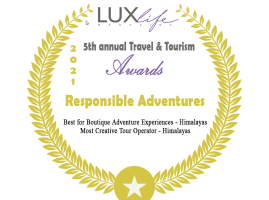People of Nepal – Race and Ethnicity.
This is a short article on the misuse/misconception of differentiating factors amongst our fellow Nepalese on Caste and Languages. I am not qualified as an expert, but these are my thoughts after spending nearly 30 years speaking to the elders of various communities in the country. It is not rocket science – after all, 1+1 always = 2 no matter what formulas are used.
There are two primary races in Nepal.
i) The Indo-Aryans or the Indo-Nepalese
ii) The Tibeto Burmans or the Tibeto-Nepalese
People of the Tibeto-Burman race came to Nepal in different periods from Mongolia and Tibet.
The Kirats came from the East and Ruled Kathmandu sometime in the 7th or 8th centuries. The Tamangs and Gurungs came to fight with a ruler of a small kingdom in the Indian Subcontinent. While returning to Tibet, after their victory over the principality, some realized that the land here was more fertile with warmer weather and decided to settle in these hills, known as Nepal today.
The Sherpas settled in Nepal between 600-700 years ago, and other ethnic groups’ migration has continued over the centuries.
Although the Indo-Nepalese migrants were latecomers to Nepal compared to the migrants from the north, they have come to dominate the country not just in numbers but also in society, politics, and the economy. They achieved early dominance over the native and the northern migrant populations, primarily because of the superior formal educational system they brought with them. Their domination has had tremendous significance regarding ethnic, bureaucratic, and political power structures.

In the first two groups, the direction of their migration and Nepal’s landscapes appeared to have led to their vertical distribution; most ethnic groups were found at particular altitudes. The first group, Indo-Nepalese origin, inhabited the more fertile lower hills, river valleys, and Tarai plains. The second dominant group consisted of Tibeto-Mongol origin communities, occupying the higher elevations from the east to the west. Finally, the third and much smaller group comprised some tribal communities, such as the Tharus and the Dhimals of the Tarai; they may be remnants of indigenous communities whose habitation predates the advent of Indo-Nepalese and Tibeto-Mongol elements.
When you arrive in Nepal, you might hear someone introduce her or himself to you in this manner:
1) “Hello, My name is Chudamani Adhikari. Chudamani is my name, and Adhikari is my caste”.
2) “Hi, John, nice to meet you. My name is Indra Hang Limbu, and I am from the Limbu caste.
1) Chudamani is half-correct, as Adhikari is one of the many clans within the Brahmin Caste.
2) Indra is incorrect, saying his Caste is Limbu. Limbu is an ethnic group that has its clans and sub-clans.
For the Hindus, their last names reveal the Caste they belong to. As the Indo-Nepalese were the pioneer educators, they taught the Tibeto-Nepalese that their surname and Caste are the same, hence the misconception.
As mentioned above, the Hindus have a caste revealed by their last name. In the case of the Tibeto-Nepalese, their last names show either their Ethnic group and clan or sub-clan.
For example, The Rai ethnic group has different clans and sub-clans. They also have a staggering 14 dialects within their ethnic group. This is the most dialect within a single ethnic group. In 2011, The Nepalese government mentioned that there are 123 mother tongues/languages. The Tibeto-Nepalese speaks most of the dialects. I believe they are variant Dialects of the Tibeto-Burman language.
Marriages.
Most people in Nepal used to marry within their castes and ethnic groups. When the marriage occurs between two different castes of the Indo-Aryan race- it is called an intercaste marriage.
It is also called intercaste marriage, when persons of two different ethnic groups get married. Technically it is a marriage within the Tibeto Burma race but between two other ethnic groups.
A marriage between an Indo-Aryan and a Tibeto Bruman is also called intercaste; in reality, it should be called interracial marriage.
For Details on Caste
Read about The Sherpas
Check out our Trekking packages for Nepal, Bhutan, India, and Tibet.

















